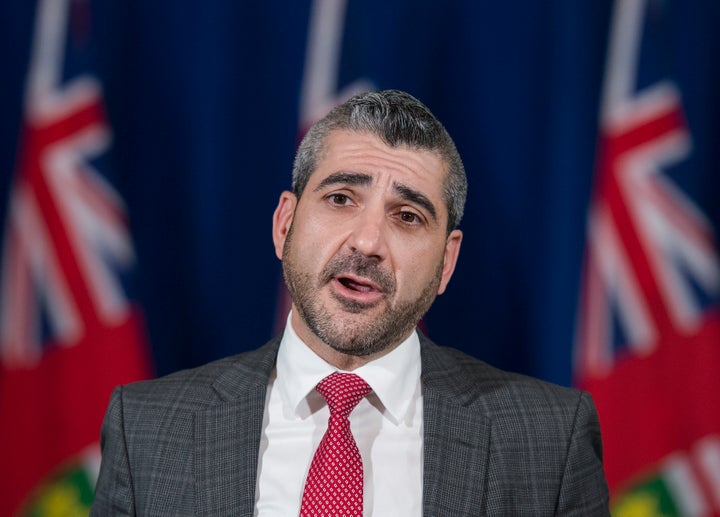
Medical experts warn the province’s lack of coordinated guidance for on-campus outbreaks is a cause for concern as Western University grapples with a COVID-19 outbreak among its students and the number of cases in Ontario is raising concerns of a second wave.
The province’s outbreak guidance for long-term care homes states that one COVID-19 case in a resident or staff member constitutes an outbreak. For elementary and secondary schools, the province’s guidance says two or more “linked” cases is considered an outbreak.
The province does not have a specific number of cases that constitutes an outbreak on a post-secondary campus, however.
“I think they should have a definition, because some colleges or universities may be slow in reporting an outbreak,” Dr. Anna Banerji, a pediatric infectious disease specialist at the University of Toronto, told HuffPost Canada.
Two epidemiologically linked cases should be the definition of an outbreak on campus, she said.
WATCH: Further lockdowns possible if COVID-19 cases continue to increase: Ford. Story continues below.
At Western, where five students who live off campus tested positive for COVID-19 on the weekend and a few more have tested positive since then, the local public health unit has declared a community outbreak. Over the past six months, the university has developed health and safety plans in collaboration with the Middlesex-London Health Unit, according to Western spokesperson Stephen Ledgley.
While the majority of classes at Western are online, the university is operating under a hybrid model with 23 courses being offered in-person, according to its reopening plan. All in-person classes will have less than 50 people, per the province’s Stage 3 guidelines for indoor gatherings, the plan states.
Ontario universities responsible for own COVID-19 policies
The province’s lack of standardized guidelines for post-secondary institutions could result in rapid spread of COVID-19 to students, Dr. Banerji said.
A spokesperson for Ontario’s ministry of colleges and universities said that the province’s post-secondary institutions are autonomous and “are responsible for developing policies and procedures to govern their institutions.”
Athena Vethanayagam said the government recognizes that college and universities are unique, and there isn’t a “one-size-fits-all solution” for the fall semester.
The province is advising post-secondary institutions to work with their local public health units, the ministry and provincial government to develop a plan that meets their needs and abides by all necessary regulations, Vethanayagam said.
Post-secondary institutions that are open to provide in-person teaching need to comply with physical distancing and other requirements under Ontario’s rules for Stage 3.
Dr. Banerji said while universities have different sizes and populations, as well as different approaches to a fully online or hybrid model, the province should still release seperate guidelines specific to post-secondary institutions to help with infection prevention and control.
Those guidelines should mandate general principles like physical distancing, consistent use of masks, no frosh week activities and a mandatory quarantine period for students flying in from other places, she said.
“Each university developing their own policies is probably not the greatest idea, unless there are certain fundamental principles that all of them accept,” Dr. Banerji said.
The province has asked universities to work with public health units to develop a plan, but she says they are already busy working on outbreak control, testing and contact tracing. Different units across the province working on policies for different universities also means work is being duplicated, she said.
Universities need coordinated guidelines, expert says
Dr. Mark Goldberg, a professor at McGill University’s Department of Medicine who trained as an epidemiologist, also said it shouldn’t be up to universities to figure out their plans and the degree to which they collaborate with public health.
“I just have serious problems with the government thinking that universities are different than other parts of society and that they can make their own rules,” he told HuffPost.
The province is “abrogating responsibility,” he said, adding universities aren’t different enough from each other that there can’t be coordinated guidelines that apply to each of them.
While most universities are operating under a remote learning model, many residence buildings remain open.
“You have these financial pressures to keep the institutions open … you keep doing that and you’re going to end up with these large clusters, and people are going to get sick, and people are going to end up in the hospital [and] people are going to die,” Dr. Goldberg said.

Ontario Minister of Colleges and Universities Ross Romano said Monday that peer-to-peer monitoring is an important part of enforcing COVID-19 safety on campuses. Premier Doug Ford has repeatedly warned students not not attend parties.
Ontario NDP Opposition Leader Andrea Horwath told reporters Monday students policing each other wasn’t an effective strategy, and she didn’t support a strategy of blaming young people for outbreaks on university campuses. Post-secondary institutions, she said, have been doing everything possible to ensure students know their responsibilities.
“Simply pointing fingers at young people and telling them not to party, when the government’s own rules say that you can have 50 people in an enclosed space at a time … I think the government needs to rethink its strategy, because simply pointing the finger is not working.”